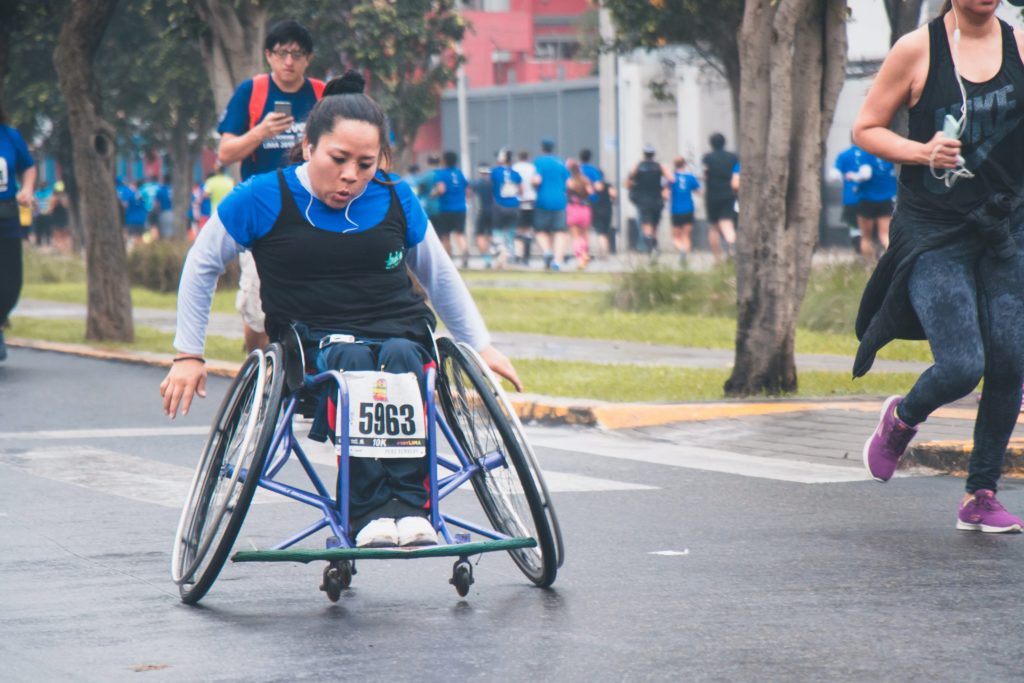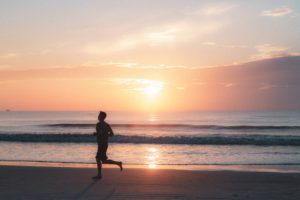Individuals living with physical disabilities face numerous barriers, ranging from policies to psychological factors, when attempting to access physical activity opportunities. In this article, we will discuss the experiences of people living with physical disabilities in Quebec, however, we will give context to the situation in a broader way as well.
Context of People Living with Physical Disabilities in Canada (1,2,3,4,5)
New data on disability in Canada states that 22 % of Canadians 15 years of age and older are living with at least one disability, including all types and degrees of severity. Approximately 1 in 5 Canadians report having a disability that limits them in their daily life, with the most common disability being physical ones; specifically, ones that are mobility, flexibility, and pain related. In Quebec, more than 2 million people live with a disability and the number is expected to rise in the upcoming years as the Canadian population continues to age.
Individuals, living with a physical disability, live with a lower socio-economic profile than individuals without a disability. They also have lower rates of education, employment, and lower income. These inequities are due to barriers; such as, inaccessible services, buildings, and technologies. They are daily barriers to community participation that individuals living with a disability face daily.
Defining Access (5, 6)
Québec Accessible is an organization that has been created to advocate for accessibility laws for individuals living with a physical disability across Canada. The organization defines a fully accessible environment as one that commits to adopting accessibility laws that apply for private, public, and non-profit sectors. These laws entail the identification, removal, and prevention of barriers faced by individuals living with a disability (Bénard, a). According to Québec Accessible barriers are defined as:
“anything that prohibits people with disabilities from fully participating in all aspects of society, including physical, attitudinal, structural, legal, informational, communicational, technological and other obstacles.”
Bénard, b- Scope section, para. 3
Accessibility in Canada (2,7)
Federally, on June 20th, 2018, the Government of Canada tabled Bill C-81, The Accessible Canada Act, an act to ensure a barrier-free Canada in which individuals with disabilities can fully participate in their community and workplace. However, the bill does not cover all aspects of individuals lives, and only applies to areas in which the federal government is in control, such as transportation between provinces, postal services, Parliament, etc. Although Bill C-81 was a positive step towards improving accessibility for all Canadians, more work is needed at the community level to ensure that all spaces and places in communities are accessible to all.
Accessibility in Quebec (7,8)
Looking at the history of accessibility laws, Quebec was one of the first provinces in Canada to adopt an ‘An act to secure handicapped persons in the exercise of their rights’, promoting the inclusion of individuals living with a disability, in 1978. Among other elements, this Act created a government disability office (Office des Personnes Handicapées du Québec), and added physical and mental disability to the grounds of discrimination under the Canadian Humans Rights Act. Unlike other provinces and countries, this act only applies to the public sector (i.e.: ministries) and has no penalties to ensure compliance. A call for action from organizations, such as Québec Accessible, has been made to reinforce the provincial accessibility law.
In fact, these calls for action allowed for new laws to be put in place within Quebec. For example, the Régie du bâtiment du Québec is an organization that adopts rules regarding accessibility, and ensures they are respected during new constructions or reconstructions of buildings in Québec. In September 2018, new accessibility rules were introduced in the Construction Code of Quebec. This law requires all new buildings, or buildings being transformed to have the adequate infrastructure that allow for an individual with a physical disability (i.e., wheelchair, or visual impairment) to access the building without obstacles, and in full safety.
‘Accessible’ Physical Activity Opportunities (9,10)
In addition to accessibility laws, accessible healthy living programs are essential in allowing individuals living with a physical disability to engage in society. There exists several fitness and recreational facilities, yet individuals living with a physical disability can rarely use them as they are mostly inaccessible, even though some may claim they are accessible.
In fact, a study examining the universal accessibility of fitness and recreational facilities in Ontario, Canada, that self-identified as being accessible found that 44 of 56 received low overall universal accessibility ratings. Another study reviewed 14 studies, mostly undertaken in the United States, looking at the accessibility of 533 public indoor fitness centers for people with disabilities. Accessibility was evaluated based on the Americans with Disabilities Act compliance legislation, and were measured based on different domains of physical access (e.g., bathrooms) and system access (e.g., staff behaviours; policies). The review found that all domains were between 33 to 68% accessible. These two studies demonstrate that many fitness and recreational facilities may claim they are accessible, however, many domains are not.
The Complexity of Accessibility (11)
Access to physical activity opportunities is more than the built environment. A recent study explored the experiences of navigating the accessibility to physical activity opportunities for people living with physical disabilities. Interviews were conducted with 20 people: current, past, non-members, and staff members of one of the only adapted physical activity centres in Montreal, Quebec : Viomax.
In this study, the authors found that
“access to physical activity was a complex interaction between different systems rather than only being an issue specific to a program or the physical space where the program was located.”
Bonnell et al., 2021 (in press)
The different systems that came together to shape the experience of accessing physical activity opportunities for individuals living with a physical disability were: i) The physical activity opportunity; ii) Social interactions; iii) Relationships; iv) Infrastructure; vi) Policies and public services. Taking a holistic approach that seeks to understand how these themes are interrelated and come together to shape participants’ experiences may help optimize access to healthy living programs.
Interconnected Systems that Shape Experiences of Access (11)
The type of activity, the cost of the activity, the staff, the friendships and the participants’ ability were all factors that shaped individuals’ perceptions of physical activity opportunities. Along with those experiences came different types of social interactions. Participants talked about the discriminatory behaviours and support from from people living without a physical disability in carrying out everyday tasks. Those social interactions also shaped their experiences of accessing physical activity opportunities.
Furthermore, the infrastructure played a key role as to whether participants could physically access different healthy living programs. Of note is that negative experiences with inaccessible infrastructure (not healthy living programs) played a role in participants’ willingness to go to new spaces, such as, healthy living programs. Finally, experiences relating to policies and public services; such as, adapted transport, interactions with public service workers, access to adapted services were all intertwined to shape participants’ perceptions of accessibility to physical activity opportunities.
Experiences of people living with a physical disability accessing physical activity opportunities are complex. In order to develop universally accessible spaces, we must carefully consider the web of different systems that play a role in individuals’ experience and reality. Working WITH people living with physical disabilities to re-create and create physical activity opportunities is a key piece to addressing all the interacting systems.
Summary
Discussing accessibility to physical activity opportunities with people living with physical disabilities has led to broader discussions, far beyond solely looking at the physical activity opportunity. A collaboration between policy makers, people involved in healthy living programs, people living with physical disabilities, and community service providers may help address accessibility to physical activity opportunities more holistically.
References
- Statistics Canada. (2018). [Graph illustration of Canadian survey on disability]. New data on disability in Canada, 2017. Retrieved from https://www150.statcan.gc.ca/n1/pub/11-627-m/11-627-m2018035-eng.htm
- Government of Canada. (2019). Canada’s first federal accessibility legislation receives Royal Assent. Retrieved from https://www.canada.ca/en/employment-social-development/news/2019/06/canadas-first-federal-accessibility-legislation-receives-royal-assent.html
- Office des personnes handicapées du Québec. (2018). Portrait sur l’accessibilité des commerces: Rapport d’étape de l’office des personnes handicapées du Québec présenté à la commission de l’économie et du travail [PDF file]. Retrieved from https://www.ophq.gouv.qc.ca/
- Olivier, Charles-Étienne. (2017). Les personnes avec incapacité au Québec: Prévalence et caractérisques de l’incapacité [PDF file]. Retrieved from https://www.ophq.gouv.qc.ca/
- a) Bénard, M. (n.d.). Fact Sheet: Why Quebec Needs a New Accessibility Law. Retrieved September 7th, 2019, from http://www.quebec-accessible.ca/en/index.php/resources/fact-sheet/
- b) Bénard, M. (n.d.). Principles for Quebec’s New Accessibility Law. Retrieved September 7th , 2019, from http://www.quebec-accessible.ca/en/index.php/about-us/principles/
- c) Bénard, M. (n.d.). Federal: Bill C-81 (The accessible Canada act). Retrieved September 7th, 2019, from http://www.quebec-accessible.ca/en/index.php/resources/laws/canada/federal-bill-c-81/
- d) Bénard, M. (n.d.). Did you know that Quebec was one of the first provinces in Canada to adopt a law promoting the inclusion of people with disabilities? Retrieved September 7th ,2019, from http://www.quebec-accessible.ca/en/index.php/resources/laws/canada/quebec/
- Arbour-Nicitopoulos, K. P., & Martin Ginis, K. A. (2011). Universal accessibility of “accessible” fitness and recreational facilities for persons with mobility disabilities. Adapted Physical Activity Quarterly, 28, 1-15. https://doi.org/10.1123/apaq.28.1.1
- Calder, A., Sole, G., & Mulligan, H. (2018). The accessibility of fitness centers for people with disabilities: A systematic review. Disability and Health Journal, 11(4), 525-536. https://doi.org/10.1016/j.dhjo.2018.04.002
- K. Bonnell, E. Michalovic, J. Koch et al., Physical activity for individuals living with a physical disability in Quebec: Issues and opportunities of access, Disability and Health Journal, https://doi.org/10.1016/j.dhjo.2021.101089





